
‘Night of the Living Dead took the zombie (in the first film, they’re referred to as ‘ghouls’), hitherto the most marginal screen monster, added the flesh-eating element and envisioned a rising tide of the reanimated dead swarming over the world. Nearly 50 years on, Night of the Living Dead has evolved through sequels, reboots, reimaginings, homages, parodies, imitations and imitations of imitations into a genre that can encompass World War Z, The Walking Dead, Shaun of the Dead, Juan of the Dead, Zombieland, Colin, Resident Evil, Warm Bodies, The Scouts’ Guide to the Zombie Apocalypse, The Girl with All the Gifts, In the Flesh and more shot-in-the-garden semi-amateur films than even I can get round to watching. In the past few years, so many films and TV shows – and comics and novels – have derived from a set of rules laid down in Night of the Living Dead (‘kill the brain and you kill the ghoul’) that the zombie apocalypse is a healthier, more prolific genre than the western or the musical.
‘Romero kept being drawn back to the world of the living dead. The Crazies (1974), which deals with a virus that drives people mad rather than revives the dead, is a thematic sequel that has fed into its own cycle of near-zombie films (David Cronenberg’s Rabid, Danny Boyle’s 28 Days Later…).
‘Dawn of the Dead (1978) and Day of the Dead (1985) are progressive sequels, changing the tone (more comedy, more aggression) as they document the downfall of civilisation. The queasy flesh-eating and entrail-fondling of the first film evolved, thanks to the genius of effects man Tom Savini, into a succession of memorable grand guignol effects – the zombie whose skull-top is sliced off by a helicopter blade as if it were a breakfast egg, the strew of entrails from a dissected corpse sitting up on a slab.
‘But as important to the films are the ideas about how people react in crises – the character (Judith O’Dea) in Night who is so traumatised by just one zombie and one death that she sits on the sofa in a catatonic slump for the rest of the film was a tonic after so many movies in which a slap across the face jolts anyone out of their terror, and the tooled-up survivalists who make a hollow utopia out of a shopping mall in Dawn are at once admirable Crusoes and too weighed down by their own lifestyle to evolve into anything better.
‘Later in his career, he delivered a second trilogy – Land of the Dead (2005), Diary of the Dead (2007) and Survival of the Dead (2009) – which now seem autumnal, melancholy works but still manage to innovate, even after all that seemed needed to be said was out of the way. Land may be, after Gremlins 2 The New Batch, the first horror film to grapple with the figure of Donald Trump (represented by Dennis Hopper’s real estate tycoon). Diary is a found footage film that stages original suspense set-pieces. And Survival has the end-of-the-road feel we now associate with final films, with a finale in which a pointless enmity is literally carried beyond the grave.
‘Made in Pittsburgh by enthusiasts who got ripped off by distributors when it became a huge hit, Night of the Living Dead showed that a horror classic could be created in any backwater – and creators like Wes Craven (The Last House on the Left), Tobe Hooper (The Texas Chain Saw Massacre), John Hancock (Let’s Scare Jessica to Death), Willard Huyck (Messiah of Evil), Larry Cohen (It’s Alive), John Carpenter (Assault on Precinct 13) and David Cronenberg (Shivers) took note. In the 1970s, suddenly, the toughest, most engaged, most frightening horrors were springing up in backyards from Texas to Toronto. The use of a contained setting and a few characters clashing while an external threat besieges is even a template for Quentin Tarantino’s Reservoir Dogs, which kicked off its own burst of low-budget genre auteurism.
‘Other filmmakers looked to Night of the Living Dead and took away the simpler message that zombies were big business – indeed, with the third or fourth wave of derivatives, getting on the flesh-eating zombie bandwagon seems to have drowned out the notion of making something original and powerful rather than imitative and pre-sold.
‘That’s the peril of creating an open-source universe: every year I assume there’s no more to be said about the zombie apocalypse only for someone like Kerry Anne Mullaney (The Dead Outside, 2009), Jeremy Gardner (The Battery, 2012), Christian James (Stalled, 2013) or Colin Minihan (It Stains the Sands Red, 2016) to prove me wrong. It may well be that Romero struggled to escape the living dead the way Conan Doyle struggled to escape Sherlock Holmes – but the greatest Holmes novel (The Hound of the Baskervilles) was written and published while the detective was officially dead, so sometimes turning away from a creation doesn’t still those upstart pendant ideas that are too good to resist.
‘Certainly, the living dead dominate Romero’s filmography, but everything else is worth a look. Jack’s Wife (1972) – aka Hungry Wives or Season of the Witch – is a remarkable little film, melding domestic feminism with witchcraft, and the extraordinary Martin (1978) is still the best ‘realistic’ vampire movie ever made. These too are influential films – in the last year, Anna Biller’s The Love Witch and Michael O’Shea’s The Transfiguration have drawn inspiration from these lesser-known back catalogue items.
‘Creepshow (1982), a colourful multi-story collaboration with Stephen King, set the horror comic/1950s throwback tone for much 1980s genre cinema, indulging in nasty fun with its zombie father demanding “Where’s my cake?”, and for the first time using recognisable character actors (Leslie Nielsen, Hal Holbrook, E.G. Marshall, Adrienne Barbeau) as vivid, venomous caricatures. Monkey Shines (1988) is still underrated – Anne Billson was right when she tagged it as better film about disability than My Left Foot, but it’s also a perfectly-judged suspense film with a strangely sympathetic menace in the helper monkey gone mad.
‘There’s Always Vanilla (1971), The Dark Half (1993) and Bruiser (2000), Romero’s least successful features, repay return visits the way many hits don’t. And Knightriders (1981), his most personal film, is an astonishing piece – an Arthurian biker movie about a wandering troupe of renaissance fayre performers (with Ed Harris as King) who joust on motorcycles, it’s also a complicated essay about trying work in a creative industry while maintaining integrity, the difficulty of balancing ethics and entertainment (a theme reprised in the monstrous pulp hack doppelganger of a literary novelist in The Dark Half), and an impulse to build a viable alternative to the paranoid, commodity-fetishist, gun-toting America laid bare in the living dead films.’ — Kim Newman
___
Stills
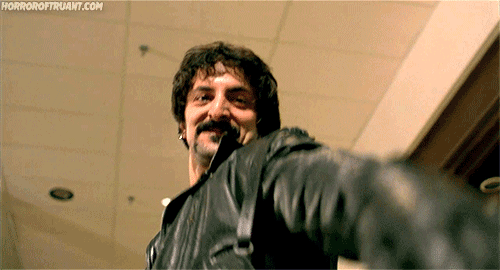
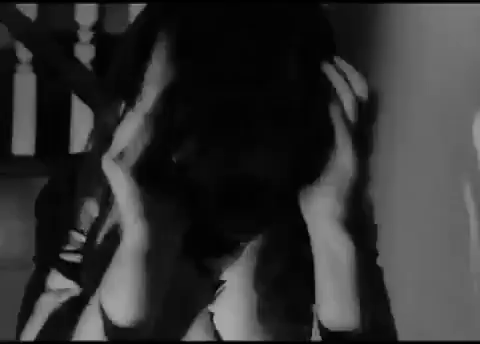


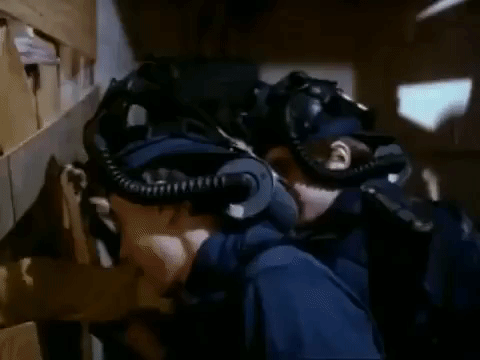
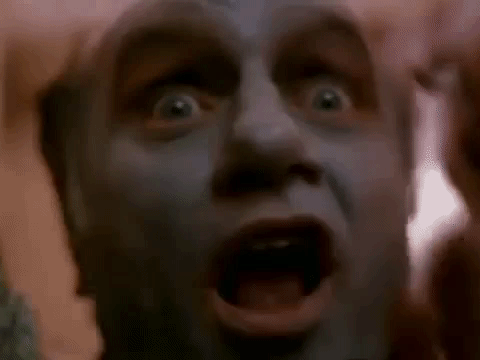
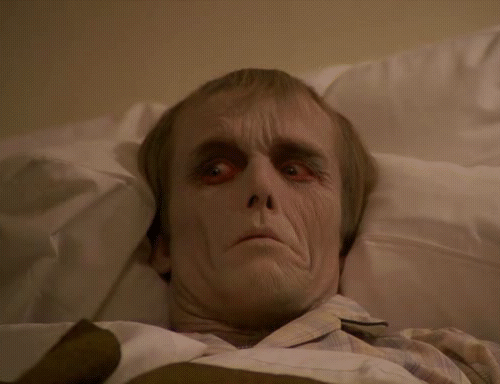
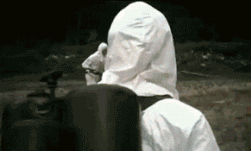

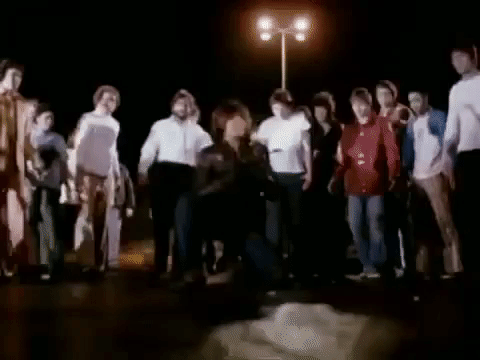
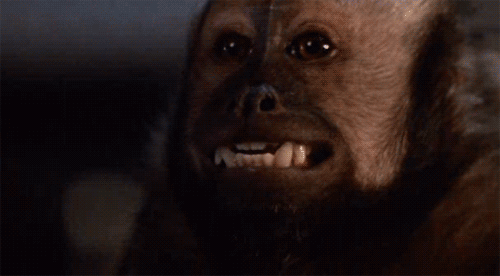
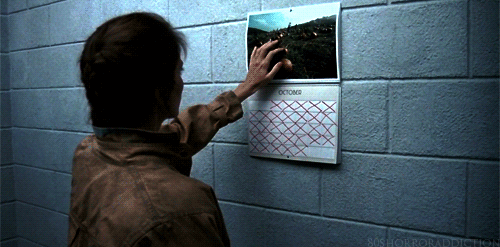
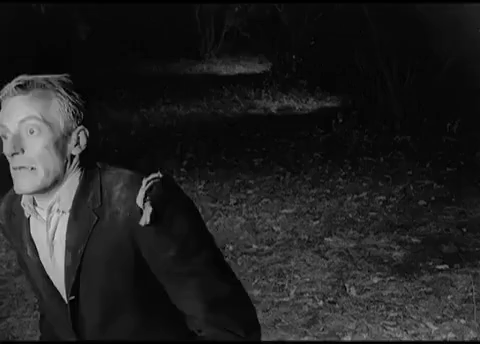

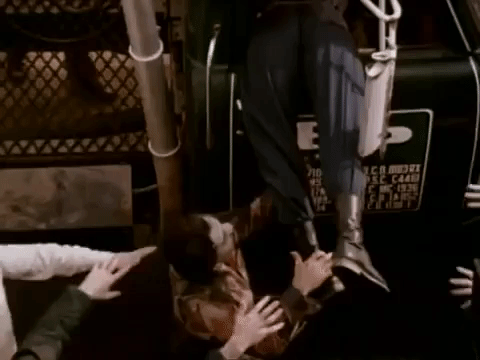
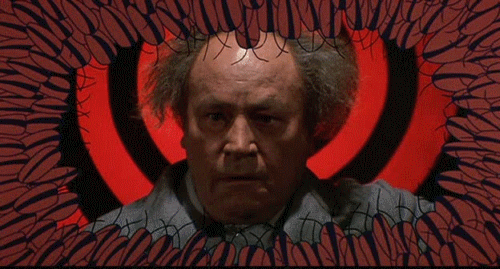
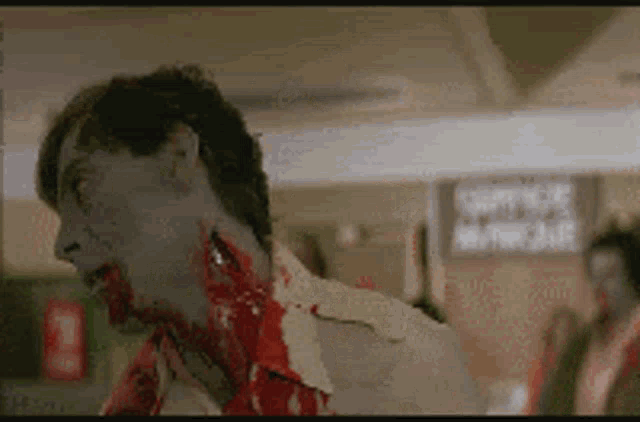

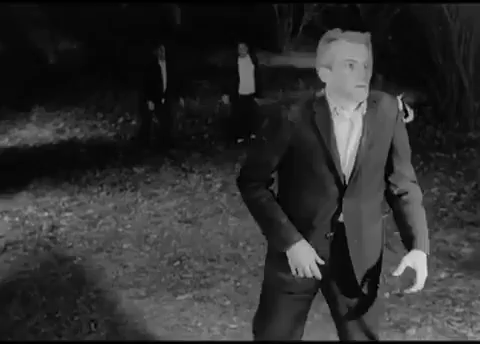
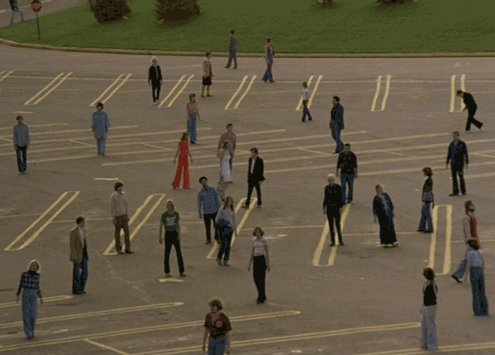
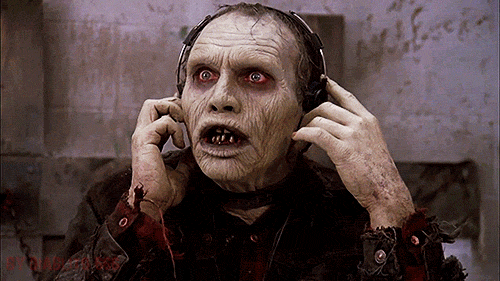
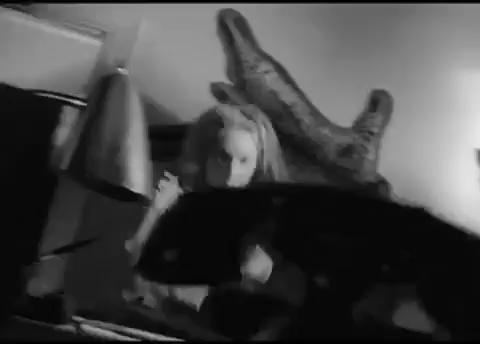
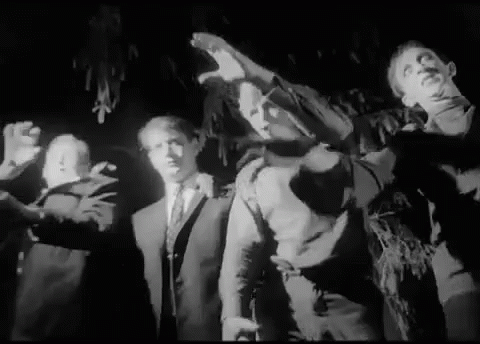
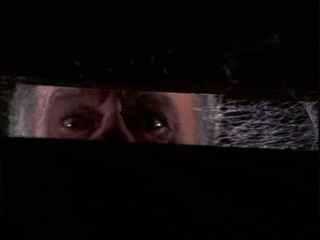
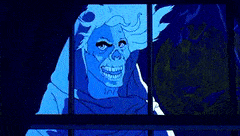

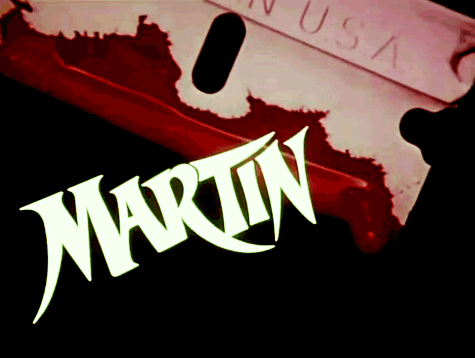
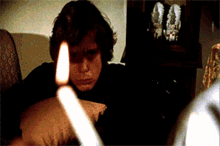
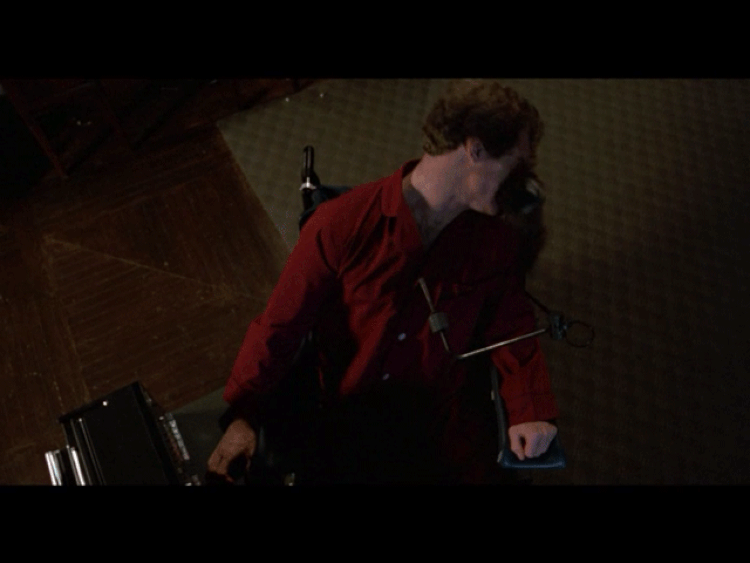

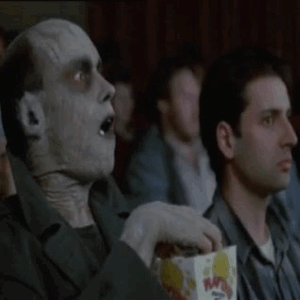


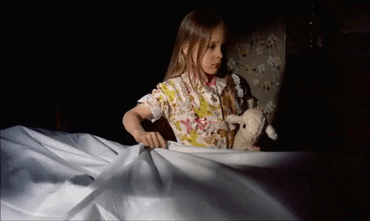

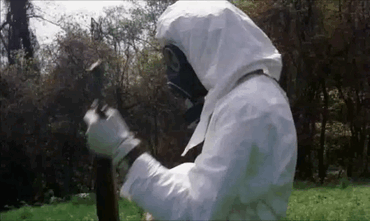

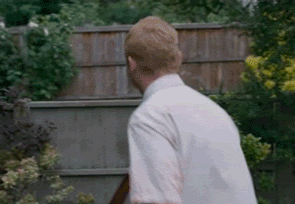
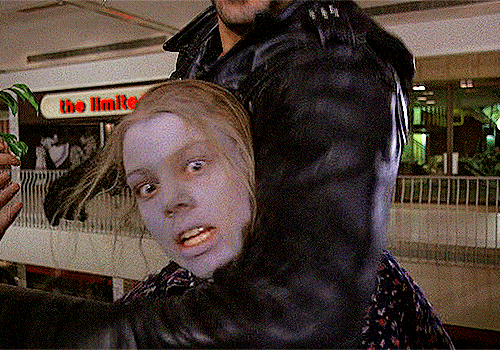
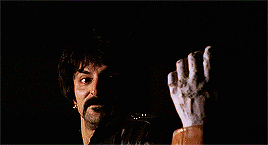
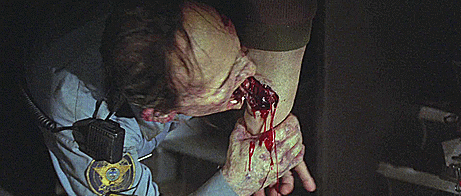
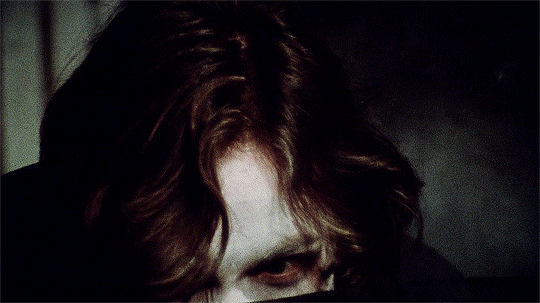
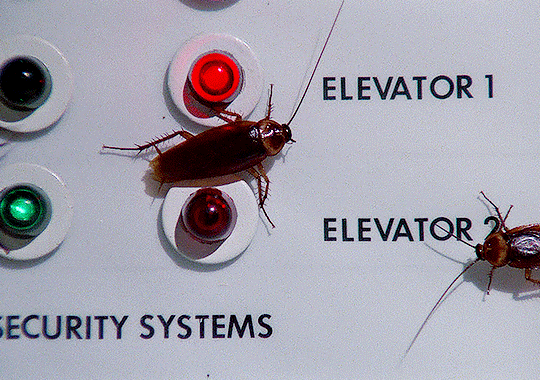

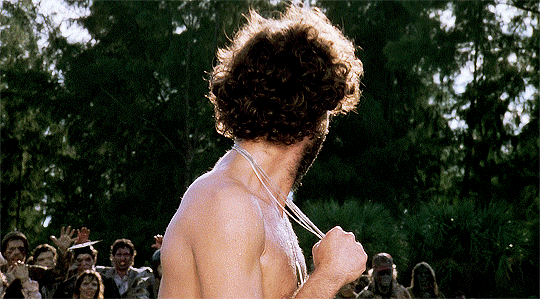
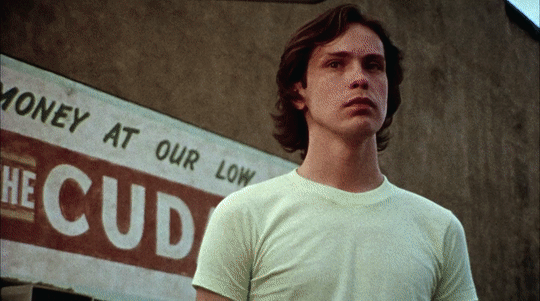

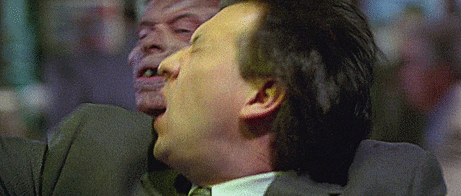
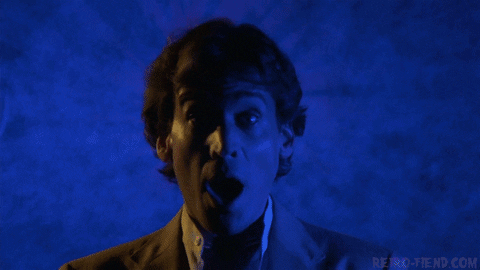
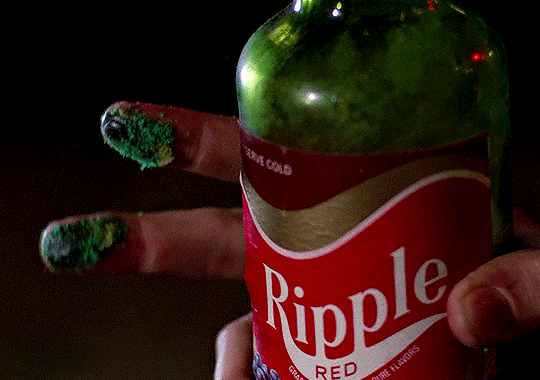

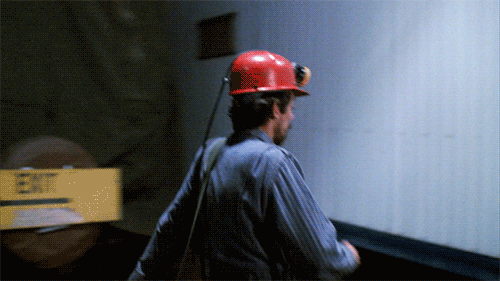
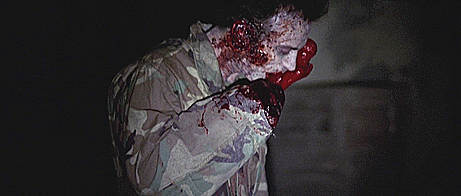
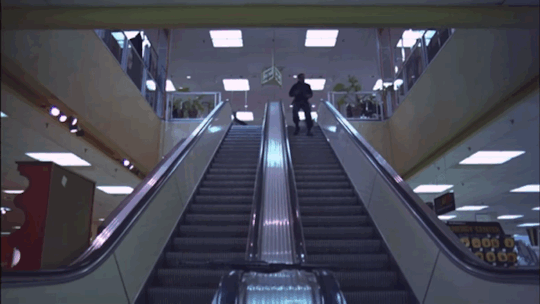
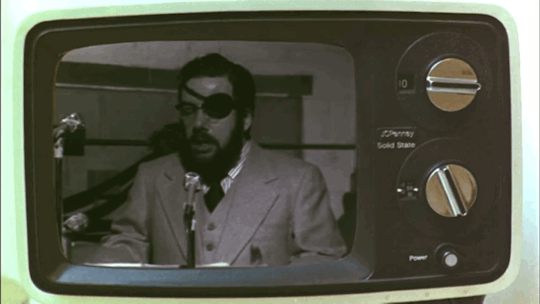
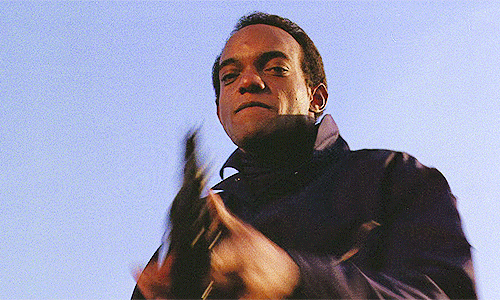
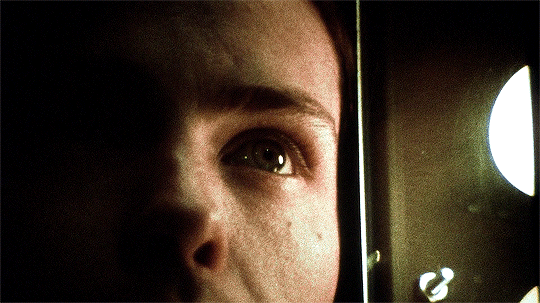

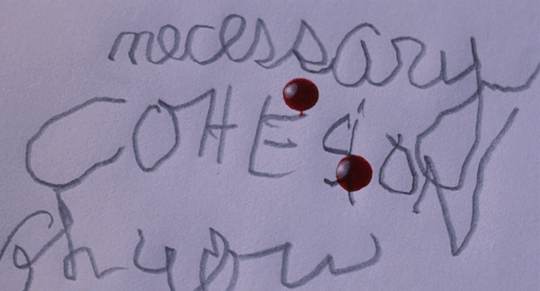

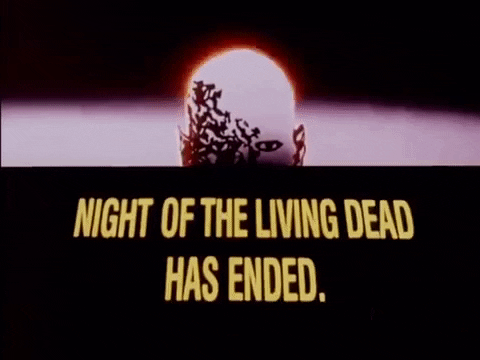
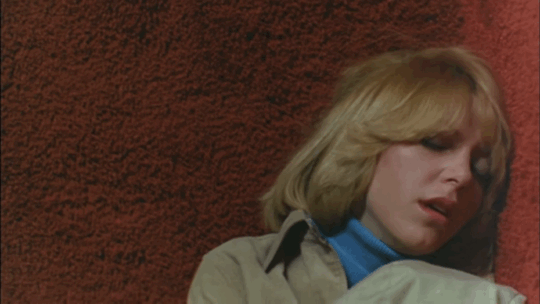
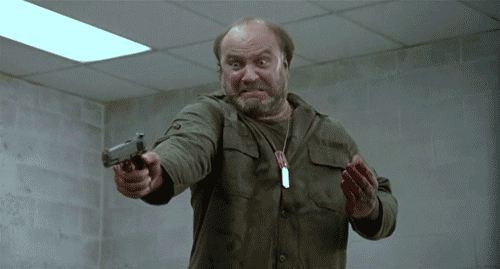
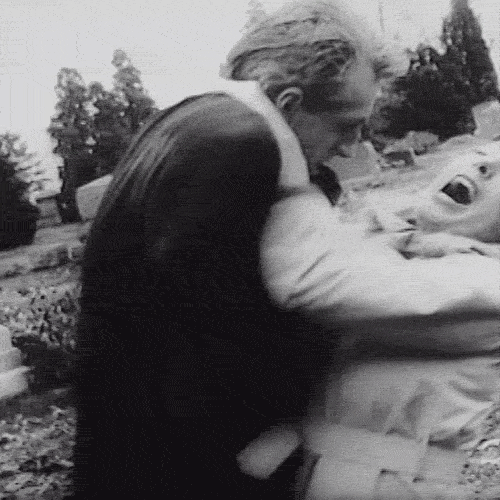
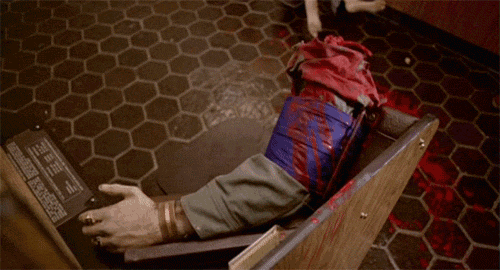

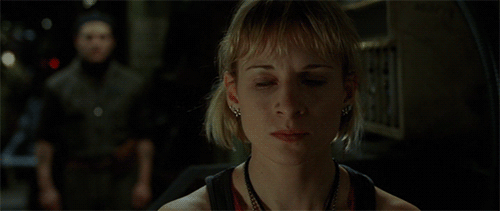
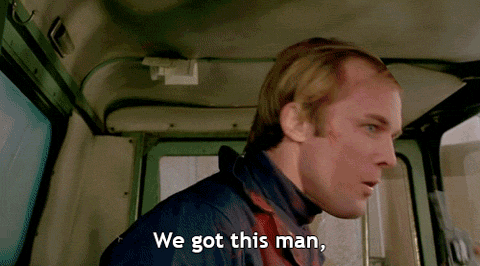
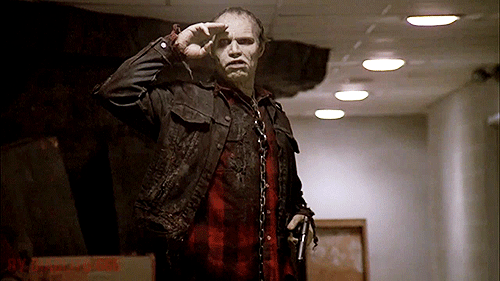
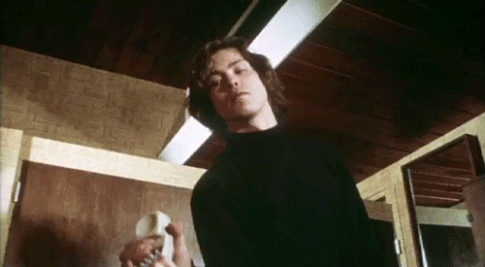
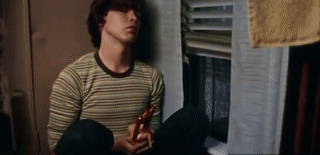
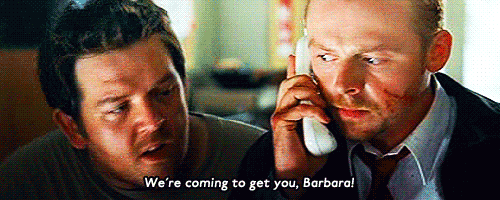
___
Further
Official George A. Romero Website
George A. Romero Foundation
The George A. Romero Archival Collection
Homepage of the Dead
George Romero @ IMDb
George A. Romero @ Senses of Cinema
Works by or about George A. Romero @ Internet Archive
Speaking of the Dead
George A. Romero and the Meaning of His Zombies
George Romero @ Twitter
George A. Romero: “Who Says Zombies Eat Brains?”
Although an erratic talent, …
George Romero didn’t mean to tackle race in Night of the Living Dead, but he did anyway
Screaming the Gospel of George A. Romero in ‘Creepshow’
The 50 Unearthed George Romero Scripts: Our Predictions
9 Filmmaking Tips from George A. Romero
George A Romero: the Sight & Sound Interview
The good, the bad and the (living) dead
George Romero didn’t just invent the zombie movie, he changed filmmaking forever
‘I never called ours zombies. We thought of them as ghouls’
George A. Romero, master of political horror
GAR @ Letterboxd
The Secret Behind Romero’s Scary Zombies: ‘I Made Them The Neighbors’
George A. Romero Explains Why Fast Zombies Could Never Exist (Hint: Weak Ankles)
George Romero Was a Legend Who Never Got the Respect He Deserved
3 things I learned from teaching students about horror pioneer George Romero’s movies
____
Extras
Lettre à George Romero – Blow up
George A. Romero Talks ‘Night of the Living Dead’ and Zombies
George A. Romero German Documentary
10 Questions for George Romero
___
Interview
by James Blackford

I understand Orson Welles and Howard Hawks were an influence on you. The Thing from Another World was a film you enjoyed…
Yeah, I enjoyed Thing from Another World, but Welles was more of an influence. When I see Night of the Living Dead though, all I can see still are the mistakes! Basic filmmaking 101: eye direction, screen direction and all of those things. I was clueless about all of that. It’s typical of a commercial director where you just focus on a shot at a time instead of, even in your head, storyboarding the whole action of the sequence.
But in those early films – I’m also thinking about Hungry Wives [AKA Season of the Witch, 1972], The Crazies [1973], Martin [1976] and Dawn of the Dead [1978] – there is a real ‘Romero style’ that emerges: a lot of cutting, carefully composed shots, depth of field, a focus on details and a lot of music. Was that a style you consciously developed?
It was, and I was better off that way. I used to cover my ass with cuts because if you covered everybody that was talking with single shots you could make the dialogue run any way you wanted it to run, whereas if you’ve got a master you’re stuck with what you’ve got. So that was my way of putting off decisions. And very often that would save the day. Having those options gave me the ability to develop that frenetic style.
It’s a sort of nervous energy that adds to the anxiety of the stories.
I hope so. I thought that it did. But then what happens is, as we started to make films with union crews and needed to compress shoot time, I had to develop more of a traditional way of doing it.
Yes, in the 1980s you developed a more conventional style.
This again was a defence mechanism. I needed to be able to make sure I got the information in a master and tried to choreograph and use camera movement instead of cuts. It was hard to come around to that. The first time I did it with any success was Bruiser [2000] maybe.
Not Creepshow [1982]? That is a bit more conventional in its style.
It is but we weren’t pressed financially or schedule-wise with Creepshow. So it still has the remnants of the earlier style, and of course the comic-book format enabled me to do different things. Panning from panel to panel… That was just fun!
It’s a fun movie. Going back to Night of the Living Dead: it’s a film that in many ways is the first truly modern horror film. It reflects so much of the unrest of the time – the 1968 student riots, the civil rights movement. How much of that was by design, and how much of that was subconscious or a happy accident?
A lot of that was by accident. The main thing people took from Night of the Living Dead was that it was a racial statement movie, and that was completely unintended. Completely. When John Russo and I collaborated on that script, in our minds, he was a white guy and when Duane [Jones] agreed to play the role we consciously didn’t change the script at all. We thought, we’ll be hip and not even notice that he was black.
Duane was very aware of it. He was really conscious of being a black guy in this role, and of course because he is black it takes on a completely different personality – a completely different texture and politics. We were a bit blind to it.
In fact, I’ve often thought we would have been better off to change the script and make race a point. There was a point could be made there. Here is a minority person faced with these redneck people. And that person might become paranoid and make the wrong decision. And he does, he makes the wrong decision, in the end.
Politics also comes into the film in other ways. The disintegration of society and societal norms…
And family. That’s really what we were most conscious of, instead of a racial theme.
That’s something that continues in your work. The Crazies has elements of a satire that looks forensically at how parts of society might behave under extreme circumstances. You see how the politicians relate to the army and how the army deals with the local doctor and the police, and how the locals respond to the baton of authority…
Yeah, I hope it does. That’s a theme I keep returning to because I think that is one of the big problems that we have. When I first did Night of the Living Dead, I didn’t call them zombies… Zombies weren’t dead before. I thought, “These people are going to be dead and they’re not going to be able to dig their way out of graves because they are too weak.” My zombies have never eaten brains! I don’t know where that came from. The Return of the Living Dead [1985] maybe. Because they could never crack open a skull.
It’s en masse that they become a threat.
Yeah exactly, but they’re dead, right? So I thought that was a new creature. I never called them zombies. But what I wanted was something amazing, something earth-shaking, an incredible disaster out there – and our people in the house are still concerned with their own little agendas instead of rationally dealing with the problem. Because it’s relatively escapable, but they seal their own doom by being too wrapped up in their own concerns. That’s the big theme I see all over society. People focused on their own thing.
It’s like in the US; the politics now are just ridiculous. We’re all shooting at each other. That’s one of my big concerns about society in general and I guess that’s why it always creeps in. Often a lot of these things are unconscious until it’s finally on the page and you’re out there staging it, shooting it and really thinking about it. It comes out in the process.
There is a sort of naturalism to the performances in many of your films. I’m thinking about films like Hungry Wives and The Crazies, where the performances give the films a realism that horror hadn’t had before. Details too: in The Crazies, the extras in the white radiation suits. In most films they would be background characters, but you make them human. You show them getting frightened. And there is that great shot where one steals a fishing rod. That sort of naturalistic detail seems to me to be a real Romero trait.
It’s hard for me to talk about that specifically because so much of that is spontaneous. I’m just always looking for things, you know? Like, this guy is going to walk through here, he might think, “Oh, look at those fishing rods. Why don’t I just grab ’em?” Or the scenes of them going through [dead people’s] pockets. Maybe that recalls the Holocaust… I wasn’t thinking so much about that at that moment, its just these guys would probably be doing that kind of thing. So, I always throw that in.
It’s just like with the zombies. In Zack Snyder’s remake of Dawn of the Dead [2004], they’re all dressed the same and are in running shoes. First of all, they shouldn’t be running! They’re all in blue jeans and running shoes and that’s it. But I try to make them nuns or…
Hare Krishnas.
Yeah! Do something with wardrobe to give it a little bit more flavour. Why not, you know?
If we could talk about Martin. It’s filmed in Pittsburgh on a low budget and with a small crew. I understand it is a favourite of yours.
It is my favourite film of mine…
It feels like a personal film when you watch it.
Yeah. I would say Knightriders [1981] is maybe a bit more personal in that it is a little more about me – my own defiance. I won’t say I’m uncompromising but I won’t compromise just for the hell of it [laughs].
Knightriders is about doing something outside of the normal system and having integrity and believing in what you’re doing. Which I guess is an analogy for you as an independent filmmaker?
That’s really what I meant, but you said it much better. So, in that sense I don’t think Martin was as much of a personal film.
But I was able to make every shot that I wanted to make. We had a very small crew; the actors were carrying the lights. Everybody was just there to make the movie. And I got every shot I wanted. It’s the only time that’s ever happened. The sequence where they’re on the telephones – when he interrupts the lovers… That whole sequence, I couldn’t have done that without that number of shots. I needed those shots to tell that story visually.
That scene is a perfect example of the Romero fast-cutting style.
Yes, it’s a good example of that. I needed the shots and I had this dedicated crew that was all about making this film. It was great. That’s really why I like that film so much.
And do you feel most comfortable working on your home turf with a small crew who you really know well?
Pretty much, yeah. I’ve sort of found that again in Toronto. Again, a team of people who I’ve worked with as long as I’ve been there. It’s great, I have a new family! Pittsburgh, for a while, became a production centre. There was one $400 million year. Hollywood was bringing productions in there. Films like The Silence of the Lambs and Innocent Blood. So my guys, the guys I worked with, were able to have careers and live at home. But then it dried up and a lot of my friends left.
And you always resisted the move to Hollywood…
Oh I did, yeah. I really didn’t want to do that. I’ve never shot a film there.
Even Land of the Dead [2005], which is a studio picture, was shot up in Toronto…
Yeah… it was actually a pick-up. It wasn’t a Universal production. We made the deal with an independent producer called Mark Canton and he sold it to Universal. But our original deal was with him.
Did they get involved after the production?
They were starting to be involved during production, but they never made a script change or anything like that. They did insist on cast.
I heard they didn’t want a black lead? I guess they had commercial reasons for that…
Yeah, they did. Actually it was Canton first who said that and Universal backed him up. They claim you can’t sell a black lead – unless it’s Denzel [Washington] – in Europe…
In Europe? Oh, so it’s our fault after all…
That’s what they think.
I guess they have the figures to back it up…
Statistics lie! My reaction was to make Big Daddy, the lead zombie, black. And he is the hero.
____________
17 of George A. Romero’s 24 films
____________
Night of the Living Dead (1968)
‘Some like ghost stories, and some prefer their undead as a bloodthirsty horde. Here’s where the world’s zombie obsession began: George Romero’s landmark classic, a raging, subversive, apocalyptic bonfire of a film. By the time the lights came up, horror would never be the same—and it still shocks.’ — MUBI
the entirety
____________
There’s Always Vanilla (1971)
‘To some people, a title like There’s Always Vanilla may sounds innocuous and even a little innocent. After all, vanilla is a flavor and it will always exist and the movie has to be titled something, right? On the other hand, people like me see a title like There’s Always Vanilla and we just cringe because it’s such a cutesy collection of words. We see the title and then we see the fact that the film was made in 1971 and we immediately assume that the film must be some sort of annoying-as-Hell counter-culture romance. There’s Always Vanilla just sounds like something someone would say while trying too hard to be profound.
‘So, this film is a bit infamous because it was directed by George Romero. It was one non-horror film and it’s also a film that he practically disowned. Apparently, it stated out as a 20-minute acting reel for Raymond Laine, which explains all the time that he spends talking to the audience. There’s some disagreement as to who exactly decided to extend it to being a feature film. It’s been suggested that Romero didn’t want to get pigeonholed as being just a horror director after the success of Night of the Living Dead but Romero said, in numerous interviews, that There’s Only Vanilla was only something he directed as a favor to some friends and that he didn’t even consider it to be one of his films.’ — Lisa Marie Bowman
Trailer
the entirety
________________
Season of the Witch (1972)
‘Filmed in 1972 under the title of Jack’s Wife, Romero was given just $170,000 to make the film, though he had been promised a slightly higher—but still very modest—budget of $250,000. So, the picture had to be made on the cheap. In addition to directing, Romero wrote the original screenplay, was the cinematographer, and edited the film. His original cut of Jack’s Wife was 130 minutes, but the distributor, Jack Harris, chopped it down to 89 minutes and changed the title. Released in 1973, it would now be called Hungry Wives.
‘The marketing materials for Hungry Wives downplayed the witchcraft angle, instead making it seem as though targeted filmgoers were in for a softcore picture, filled with married women who were all stepping out on their husbands (quite misleading, though there is some brief nudity and the protagonist does have an affair).
‘Despite (or perhaps because of) the efforts made by the distributor to make the film a box office hit, it failed to find an audience. Understandably, Romero later looked back on the entire endeavor as “a pretty disappointing experience.” There are no existing copies of his 130-minute cut.’ — Bart Bealmear
Trailer
Excerpt
_____________
The Crazies (1973)
‘Released only a few years before he made his two greatest films, ‘Martin’ and ‘Dawn of the Dead,’ ‘The Crazies’ is an odd entry in the George A. Romero canon. The film concerns a small Pennsylvania town where a plane carrying a top secret biological weapon has crash landed in the nearby mountain range. The chemical seeps into the water supply causing infected citizens to go mad, murder each other, destroy their homes, and rampage through the streets. The military is sent in with little information as they try and fail to contain the situation. A few locals escape the government’s jurisdiction and do their best to maintain their freedom before one-by-one succumbing to the all-around toxic atmosphere.
‘Often shrugged off as a low budget dry-run for ‘Dawn,’ the roughness of the film’s aesthetics is among its greatest attributes; it gives ‘The Crazies’ an urgency that adds to the drama and confusion of characters winging it at every social and governmental level. No one knows what they are doing, and the style of the film reflects that. The scariest part of the film isn’t the violence or the gore, but the lack of perspective from everyone involved, especially those in charge. The film is in many ways a comedy of errors, but more crucially, it’s a tragedy of no one listening to one another. No one wants to accept responsibility for anything that takes place, with individuals and departments trying to clear their name of any possible reasons for demerit or complaining that they should have been in charge instead of some other department. The few people trying to make a difference are met with red tape and must hurdle through endless bureaucratic hindrances. Few films are as provocative as ‘The Crazies’ in showing how efficient the government institutions are at using protocol to impede upon potential solutions.’ — Brett Wright
Trailer
the entirety
_____________
The Amusement Park (1975)
‘The Amusement Park is touted in the trailer as Romero’s most terrifying film, but in fact it’s not officially a horror movie at all. In 1973, Romero shot the 60-minute film on commission from the Lutheran Society as a PSA on age discrimination. But the film was never actually shown and has been unavailable ever since. It wasn’t until two years ago that Romero’s widow Suzanne Desrocher-Romero revealed that a 4K restoration of The Amusement Park was being made.
‘Romero’s idea of a PSA on age discrimination is nothing like anyone else’s. Instead of delivering a straight-forward educational film, Romero crafts a surrealistic nightmare movie about a single old man finding himself lost and confused amid the attractions at the titular amusement park. Romero’s surreal approach to the subject matter was perhaps a bit too abstract and strange for the Lutheran Society, but fans of the director will be only too eager to visit The Amusement Park and take one last ride with the man who revolutionized horror (while learning a valuable lesson about age discrimination).’ — Dan Zinski
Trailer
__________
Martin (1978)
‘Martin gets better and just hits harder every time I watch it… an urban gothic gutpunch of the highest order and one of the great undervalued terrors of the 1970’s.
‘Top tier Romero for me, there’s just something about this picture and the way George manages to convey more with less than most filmmakers do with boatloads of cash. There’s just so much for me to love here: the editing, the in your face violence that dares you to turn away, the moody Pittsburgh vampire Maniac grime on display, the social satire, and holy smokes that damn sledgehammer of an ending is a real peach. It’s riveting stuff… a primal character study that crawls along slowly with a downbeat pulse while always managing to feel thoughtful as hell… nobody made movies quite like this during that era, or perhaps I should say that nobody made movies like this in any era quite like George Romero.’ — Ian West
Trailer
the entirety
_____________
Dawn of the Dead (1978)
‘Dawn of the Dead is what Beth Accomando calls Romero’s “taxonomy of horror.” And this is not because of the salacious scenes of gore, but because he turns the camera on our darker, internal nature which is just as greedy, if not more so, then the flesh-eating zombies. Romero chastises the capitalists and consumerists with ferocity and wit that reality TV shows, such as My Super Sweet 16, address today. Romero demonstrates the lengths human beings will go to in order to preserve not only their lives, but their belongings as well. Nothing says success like accruing one too many possessions.
‘Towards the end of the film, it is not the zombies that dehumanize and antagonize others, but the human characters—like a fictional Stanford prison experiment where an illusion of authority renders inexcusable behavior from the gluttonous group. Thus Dawn of the Dead reveals our primal, darker selves, and forces viewers to realize that maybe we really are the problem as we steal, consume, and, ultimately, destroy ourselves.’ — Hannah Bonner
Trailer
the entirety w/ commentary by George A. Romero, Tom Savini & Chris Romero
_____________
Knightriders (1981)
‘George Romero will always be known as the man who gave us the modern zombie movie, a genre of horror with social commentary that’s always strongly underpinned by narratives that involve the breakdown of a society. Whether that society is a group of strangers thrust into a secluded farmhouse or a high-walled bastion of the privileged, the narratives of his most iconic works dealt in tragedy that stemmed from greater ills. It’s strangely apt, then, that a movie that sounds as ridiculous as his 1981 film Knightriders is sort of the same kind of story: a group of people faced with an untenable situation, all aware that they may be, in a sense, doomed.
‘Romero sets Knightriders in contemporary times, following a ragtag traveling show whose players dress up like medieval knights and entertainers and put on a jousting tournament … on motorcycles. The movie follows the tragic arc of their king, troupe leader Billy (Ed Harris) as he stubbornly insists on holding to the original values of his unique little group, all while the outside world’s authorities and temptations try to pull apart the family that he’s brought together.
‘This is a film with portentous visions of doom, cheery hangout sessions between roadies, motorcycle stunts that will make any biker who has wiped out at least once cringe down to their marrow, and a Merlin who can blow a mean harp (storyteller Hugh Morgan Hill, who performed as Brother Blue and unbelievably never really starred in anything else). It is a movie where Harris, dressed in a full knight get-up, calmly sits opposite a police officer at a McDonald’s booth before punching him in the face.’ — Kenneth Lowe
Trailer
_____________
Creepshow (1982)
‘Romero and Stephen King got the absolute right tone of the EC Comics, both in look and in execution. Creepshow is funny and scary in equal measure, employing some inventive storytelling and distinctive chills. The movie was a hit, debuting at number one and making over $21 million during its run (quite a lot in those days). But its legacy and importance to horror is far more than simply making a lot of money. It led to and defined the next 15 years of horror on television. Shortly after Creepshow‘s success, Romero co-created a TV series entitled Tales from the Darkside, an anthology horror series which ran in syndication for 89 episodes, employing Creepshow‘s sense of humor and offering as many scares as were allowed on television at the time. If you look at the TV landscape of the early ’80s, there hadn’t been much in the way of anthology horror series, especially in America, since 1973 when Rod Serling’s Night Gallery went off the air. But after Tales from the Darkside, the floodgates were wide open.’ — Kyle Anderson
Trailer
“Creepshow” intro/interview
_____________
Day Of The Dead (1985)
‘When legendary horror auteur George A. Romero set out to make Day of the Dead — the third chapter in a trilogy that included the wildly popular and groundbreaking Night of the Living Dead (1968) and Dawn of the Dead (1979) — he envisioned it as an epic conclusion to the story that he first began telling back in Pittsburgh in the late 1960s with a crew of friends and co-workers and a budget of just $114,000.
‘But the movie that Romero ended up making was not the one he started out with — and even though many were perhaps initially disappointed with Day of the Dead, it’s been re-evaluated over the years by fans, critics, and even by the late Romero himself, who wound up calling it his favorite of the original trilogy.
‘“When it first came out, the audience was like, ‘What the hell is this?’” says Lori Cardille, the Pittsburgh-based actress who starred as the film’s lead, scientist Sarah Bowman. “They said, ‘It’s too talky. It’s too over-the-top. These actors are too over-the-top. This is not Dawn of the Dead. I don’t know what this is, but it’s not what we expected.’ That’s why it sort of came and went, except for some people that held it and saw it for what it really was meant to be.”’ — Don Kaye
Trailer
Excerpt
The Making Of ‘Day Of The Dead’
___________
Monkey Shines (1988)
‘Monkey Shines is a decidedly different beast to the ‘…of the Dead’ films for which Romero is so well known: the director eschews the cartoonish blood and guts approach that has made his zombie films so popular with gore-hounds (although make-up legend Tom Savini is still on hand to provide a couple of impressive effects), and opts instead for slow-burn tension and nail-biting suspense.
‘This more mature and reserved directorial style, coupled with excellent performances (Beghe, who is limited to acting only with his head, is superb), a well written script (adapted by Romero from the novel by Michael Stewart), and a few decent jump scares, results in a satisfying little horror/chiller that proves there is more to Romero than just gut-munching and bullets to the head.’ — BA Harrison
Trailer
___________
The Dark Half (1993)
‘The Dark Half is one of the finest Stephen King adaptations. It’s also one of George Romero’s most under-appreciated works. The two of them have collaborated on many occasions to produce nothing but good things, but this takes it to a new level. Romero is known for casting unknowns for his leads. This time he went against the grain. He used the amazing Timothy Hutton. Hutton, in a dual role, plays both mild-mannered Thad Beaumont and mean b*stard George Stark. But when he’s Stark, he really comes to life. He’s both cool and creepy. The sparrows are also a crucial part of the overall eeriness of the movie. Although he will always be known for the unforgettable Dead trilogy, this may be Romero’s finest, most high-brow picture to date. The production values are the cleanest I’ve seen in any Romero flick, the acting is top-notch, and story is solid. Getting a scare at the theater is fairly easily achieved. Getting me to jump in the privacy of my own home in another thing altogether. Romero made me jump while watching the movie on a crappy 19 inch television and I’ve seen the movie before. That’s saying something.’ — Backlash007
Trailer
Excerpt
_____________
Misfits – Scream! [OFFICIAL VIDEO] (1999)
‘Directed by George Romero as a return favor to The Misfits for appearing in and contributing music to his movie, “Bruiser”.’ — discogs
the entirety
__________
Bruiser (1999)
‘George Romero’s first feature in seven years, following The Dark Half in 1993, is this attempt at a psychological thriller. It’s interesting but far from perfect. The plot focuses on a man who spends his life being trodden on – until one day he wakes up without his face, and decides to get his own back. It’s a fascinating concept, but it’s wrapped around such a generic story. Most of the pillars are laid out in the first act – nobody listens to him at work, his wife is sleeping with his boss, his friend is ripping him off….etc. The whole thing becomes rather predictable far too early. Luckily there are some saving graces. The violent fantasy gimmick in the first act is great (though sadly not weaved into the film later on) The film has a brash visual style that works well, especially when the cold blank “mask” is introduced. There’s a few decent death scenes and the cast is quite remarkable too – Peter Stormare especially with easily the most memorable role. Bruiser really grinds to a halt in the last twenty minutes or so – the big party scene is visually interesting but there’s no real closure on the story, meaning the final message is messy to say the least. Something to do with standing up for yourself, or finding yourself….or thinking about your image. Something like that.’ — Slig001
Trailer
George Romero/The Misfits – On The Set Of Bruiser
____________
Land of the Dead (2005)
‘This is perhaps Romero’s strangest, most uneven zombie film, but it’s also the last entry in the series to truly contain a spark of the divine. It’s also the only one of the 2000s efforts to genuinely pick up where the themes of Day of the Dead left off, and for this in particular it deserves its place in the zombie movie pantheon.’ — Jim Vorel
Trailer
____________
Diary of the Dead (2007)
‘As Diary of the Dead proves, time hasn’t subdued George A. Romero’s affection for mixing politics with gore, nor has it given him cinematic grace or subtlety.’ — RT
Trailer
Excerpt
____________
Survival of the Dead (2009)
‘What we’ve got here is a just a B-movie western with buckets of gore, which might be fine coming from a Romero wannabe but not from the genuine article.’ — Jason Anderson
Trailer
the entirety
*
p.s. Hey. ** Dominik, Hi!!! Oh, no, I hope the heat isn’t too brutal. Hopefully you’ll have the post-wave weather we’re got right now. Raining, cloudy, 26 degrees. Feels like, you know, heaven. I can totally imagine what an interesting pleasure it would be to edit romance novels. Total fun, really. Years ago I had this scheme/plan to get a job doing rewrites on crappy mainstream film scripts because I figured it would be big fun and even very easy to improve their shitty dialogue for easy money. But it turned out you have to be already connected in the movie industry to get that kind of job, and I definitely wasn’t. You can tell love that I’m definitely goosebump. My favorite? That’s always a hard question for some reason. Hold on. I think it would be a tie between 18nextweek, thesmiths, Up4auction@sothebys (of course), and okiwilldoit. That’s too many, sorry. Love turning the sun into a gigantic leaf blower, G. ** Robert, Hi, Robert. There’s no chance that My_Expensive_Boy exists in reality in that exact form, no. 🙁 ‘If It Wasn’t For The Nights’ is great. Later ABBA is the best. The other week I cued up ‘Under Attack’ and ended up looping it 18 times before I was satisfied. Oh, no! I still haven’t gotten Co, and I’m becoming an increasingly rare freak. I’m so sorry. If you can rabid-read, you sound like you’re not too badly off. Full time work, ugh. Is there some kind of hex I could try to throw that might ease that burden? ** David Ehrenstein, Rene would be perfect for one of those oral biography books a la ‘Please Kill Me’ or ‘Edie’. Raymond Foye is very devoted to Rene’s legacy, maybe he could coordinate that. ** Bill, I know, what an excellent sentence. Derek White has been putting these great graphics/text/image books in the last few years through Calamari under various pseudonyms like MM/DD/2020, No One, and anon I’m us. If you go to Calamari’s site you’ll see them. I’ve read most of them, and they’re terrific. Oh, cool, I’ll watch those Robert Morgan shorts, thank you. I hope Tuesday is a youseday. ** _Black_Acrylic, God damn fucking solicitors! Is the delay partly because it’s August/summer? I know in France everything stops at this time of year. Enjoy the food at least. Such a celebration coming, man, hold on! ** Steve Erickson, Royal Ascot. Based on Up4auction@sothebys’s final riposte, I think melodrama was the cause. Everyone, Two reviews for you from Mr. Erickson: ‘Slant Magazine has just published my August reviews on Terence, Etc.’s VORTEX and Megan Thee Stallion’s TRAUMAZINE.’ I haven’t listened to NEU! 86 in ages. I remember being let down and unsurprised by being let down, but I don’t remember why. Maybe the ‘drums’ you mentioned. I’ll retry. ** Right. Today’s post is another one of those posts inspired by the realisation that I strangely hadn’t done a post about someone who seemed like someone whom I would already have done a post about. Enjoy, etc. See you tomorrow.




 Now available in North America
Now available in North America 
Hi!!
In the morning, it looked like it was about to rain, but the weather changed its mind since then. I’m not complaining, though; it’s pretty okay in my apartment right now.
Yes! That’s exactly what I’m talking about! I can totally, totally understand why you wanted to work on those film scripts. It’s such a pity that it didn’t happen in the end.
And speaking of films – although definitely not crappy ones – what are the next steps for you now that the fundraising period is finally over?
I think yesterday’s escort group made it impossible to go for just one of them, seriously. And it looks like we’ll have to share at least half of our sweethearts, haha.
I wonder if that’d help the current weather situation some – if the sun were a giant leaf blower. Maybe. Love casually looking for porn with a lead who looks like John Amplas 45 years ago, Od.
“Dawn of the Dead” is my favorite,
Do you make all these gifts yourself or do you find them? I’m curious about the order. Decided to bite on one of your recommendations and am getting Death Sentence
Love
Xxx
Romero is a real hero to anyone working on a budget. I’ve still to see Martin and defo will do very soon. Monkey Shines is a solely under-rated treat.
I’m just about to start on George Eliot’s Mill on the Floss. Goodreads has it as a “vivid portrayal of childhood and adolescence in rural England”, plus Philip Best gives it a 5 star rating. Will report back in however long it takes to get through.
MARTIN is my absolute favorite. Hopefully whoever bought the recently discovered 150 min b&w version that Romero preferred will do the right thing with the print.
https://www.julienslive.com/lot-details/index/catalog/428/lot/182131